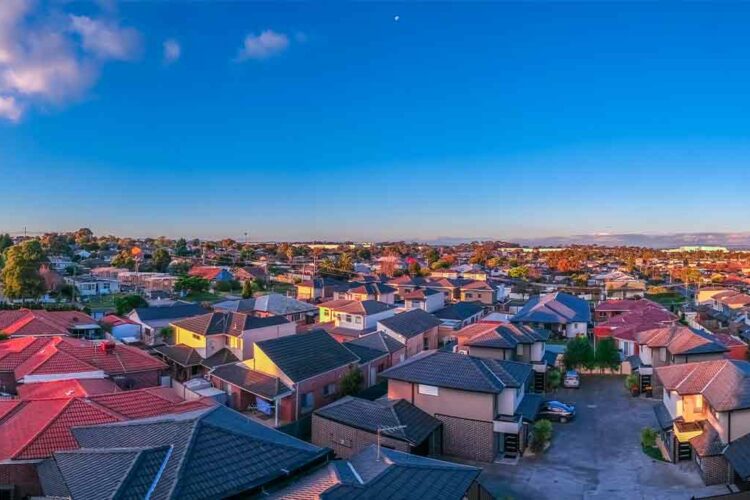The average Australian has seen a 30 per cent drop in their borrowing power since the Reserve Bank of Australia (RBA) began lifting rates 19 months ago.
When the RBA lifted the cash rate by a further 0.25 per cent in November, the maximum borrowing capacity of the average earner dropped by an estimated $10,500.
That’s according to RateCity, who crunched the numbers on the financial impact of the rate hiking cycle, which began in May of 2022.
The firm found that the average earner can now access over $200,000 less in lending from Australian financial institutions.
Taking it a step further, RateCity found that for a family of four, where one parent works full-time on the average wage, and the other works part-time at half of this wage, the maximum borrowing power drops even lower – by $13,100 over this last rate hike, and by a whopping $278,100 across all 13 hikes since May 2022.
Weighing in on the findings, RateCity research director Sally Tindall described the hikes as having “decimated” people’s borrowing power.
Even so, she acknowledged that “Australia’s Teflon property market has posted rise after rise.”
“Property prices took a tumble in 2022 as the RBA fired off one double hike after another, but a lack of stock, alongside strong demand, has seen prices storm back this year.”
And even though the average Aussie will be wielding less money, the research director is of the belief that “this kind of setback is unlikely to deter committed buyers heading into an auction this weekend”.
“However, across the 13 hikes, many people’s home buying budgets have dropped by over $200,000. That’s enough to force some people into reassessing their property buying plans altogether.”
For those who are now finding themselves unable to buy the home they want, Ms Tindall is urging a return to the drawing board – “see if you can come up with a plan B, or a plan C”.
“It’s also worth taking a look at ways to boost your borrowing capacity, such as searching for a lender willing to offer you an ultra-low rate, or sometimes it can be as simple as closing down your credit card account.”
RateCity’s own research found that if someone earning the average wage closes down a credit card with a $10,000 limit, they may be able to lift their borrowing capacity by over $40,000.
“After four months of cash rate pauses, buyers in the market have gotten used to not having to check and recheck their borrowing capacity with their bank, however, that’s exactly what they should do on the back of this latest hike,” she advised.
“If you’ve got pre-approval for a loan, give your broker or bank a quick call to double check you’ve still got the green light for the maximum amount you’ve applied for, but also get them to show you just how much your repayments would be if your rate rose even further.
“The bank might be stress testing your finances to make sure you can survive a rate hike of up to 3 percentage points, but it’s worth having a look at what that figure is yourself. Once you see it, you might think twice about taking on that kind of debt.”


